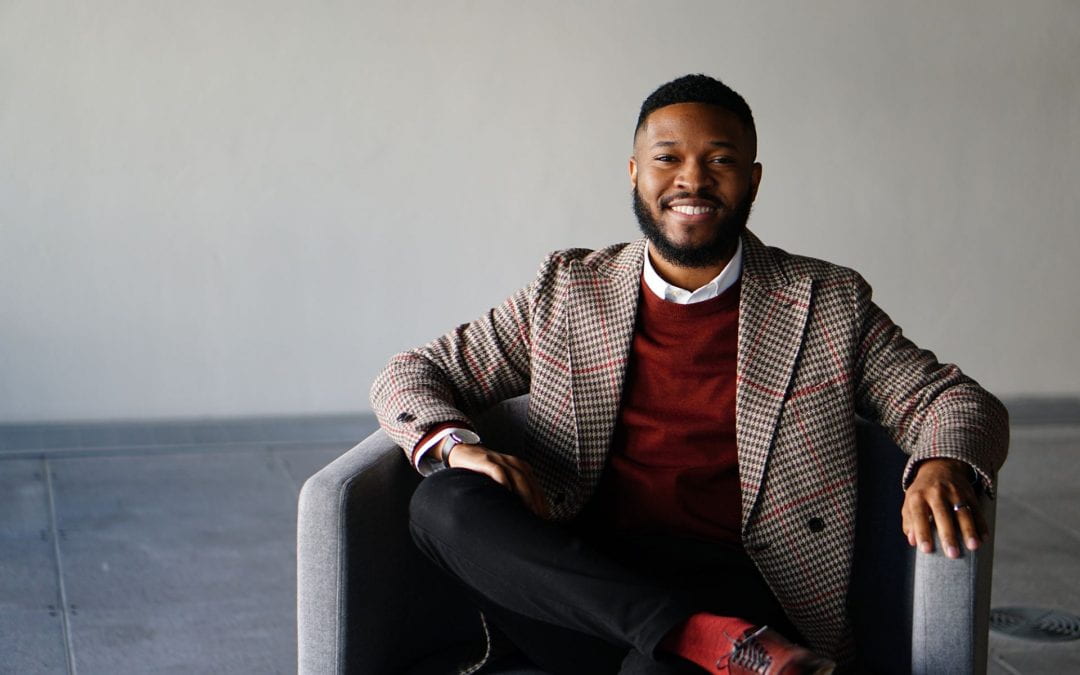Ernest Banks (B.Arch. ’18), is an architectural designer at Polk Stanley Wilcox Architects. During this conversation, he discussed essential skills for the profession and how he gives back to the community through architectural advocacy.
When did you become interested in architecture and why?
I didn’t really grow up with an interest in drawing or the arts, and it wasn’t until middle school that I knew that I wanted to be an architect. One year, I placed first in a STEM Architecture competition to design a community outreach building, and that moment was the turning point for me. After that, I would find myself on a computer working in CAD and modeling software while coming up with imaginary designs.
Why did you choose to go to the University of Arkansas and/or the Fay Jones School?
Before pursuing a degree in architecture, I worked toward getting my degree in civil engineering. I loved architecture, but I had a strong foundation in math and science before entering college. I didn’t feel confident that I’d be able to keep up with students who already had design skills, but after working various internships alongside architects, I knew that I would regret it if I didn’t try.
What has been your favorite project to work on?
I have two! One was a feasibility and masterplan study for a historic church campus near downtown Little Rock. It involved conducting an in-depth analysis of the church’s history, modeling and recording existing conditions, and envisioning how the campus could evolve and better serve its users in the future. While it may not have involved something being built, I thought it was a valuable lesson in preservation, adaptive reuse, and community planning. The second was a playhouse that I helped design for charity.
What is the most challenging part of your job?
If I’m being honest, the most challenging part for me is managing my time. Projects that will be built are a lot of work, and juggling those responsibilities is something that school didn’t really prepare me for. Fortunately, the skills that I did learn while in school, such as listening to feedback, have made things a lot easier.
What are your interests or involvements outside of design?
I am heavily involved in nonprofit community service and architectural advocacy outside of design, which I suppose still involves design, but I do it for free. I work with students, local government, and other community members to spread the word about what’s possible through architecture. Recently, I’ve worked with my local AIA chapter and local school district to workshop an architecture lesson plan for elementary school students. I’m also starting a scholarship/mentorship program for design students with help from a nonprofit that I’m a part of.
What unique experiences or perspectives do you have that make you stand out as an architect?
Well, I don’t come from a traditional design background due to my experience in engineering. While my time at the Fay Jones School was instrumental in shaping my core design principles, I still tend to look at projects through a formulaic lens. It hurts me as much as it helps, but I think being able to step back and question the feasibility of a design in regard to how it will be built has been an essential skill. It also helps me put the brakes on any ideas I have that may be too crazy.
Who have been your biggest supporters?
My wife, who I met in school. It helps that she’s an architect and sets the bar high for me.
What’s the best part of being an architect?
The people we serve through our designs. If there’s anything I learned since being out of school, it is that understanding people, culture and how best to serve the needs of a community can be one of the most rewarding things about being an architect. Designing spaces is great, but it wouldn’t mean anything without someone or something there to experience them.
